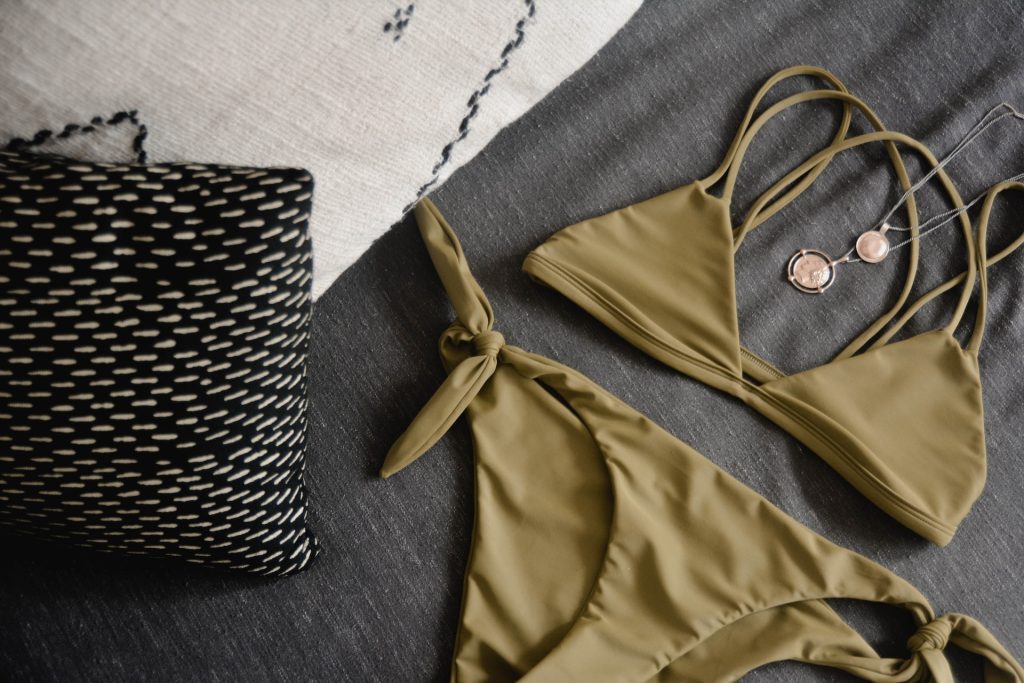Swimwear's journey through history is a captivating narrative that mirrors societal shifts. From the modest bathing costumes of the 19th century, designed to preserve decency, to the daring two-pieces that emerged in the mid-20th century challenging conventions, swimwear reflects changing attitudes towards the human body and leisure.
The evolution isn't just in style; it's a testament to societal liberation and a reflection of technological advancements, adapting to the evolving needs and expectations of swimmers through the ages.
Changes in Design and Functionality Over Time

The metamorphosis of swim clothing extends beyond mere aesthetics; it mirrors a continuous quest for improved performance. Over the decades, designs have shifted from cumbersome suits to streamlined, high-tech fabrics engineered for hydrodynamic efficiency. Innovations like chlorine-resistant materials and compression technologies highlight a commitment to functionality.
This journey through design evolution not only parallels fashion trends but, more importantly, aligns with the relentless pursuit of enhancing the swim experience, making each stroke a harmonious blend of style and purpose.
Technical Aspects of Swim Clothing
Importance of Fabric Choice
The very essence of effective swim clothing lies in the meticulous selection of fabrics. Beyond aesthetics, performance is intricately tied to the material's properties. Quick-drying, lightweight fabrics are essential for minimizing drag, while providing the necessary flexibility for diverse swimming styles. Chlorine-resistant textiles ensure durability, with UV protection becoming increasingly vital.
The right fabric isn't just a second skin; it's a technical marvel, offering a balance between comfort, durability, and functionality, ultimately enhancing the swimmer's overall experience.
Role of Compression in Swimwear
Compression technology has emerged as a game-changer in swimwear, revolutionizing the way swimmers engage with the water. The snug, compressive fit of modern swim attire not only enhances muscle support but also aids in minimizing drag. By reducing water resistance, compression suits contribute to improved speed and efficiency in the water.
This innovative approach not only supports the swimmer's physiology but also underscores the marriage of biomechanics and fashion, making swimwear an integral part of the performance-driven aquatic ensemble.
Impact of Swimwear on Hydrodynamics

The hydrodynamic profile of swimwear significantly influences a swimmer's interaction with water. Streamlined designs and strategically placed seams reduce resistance, allowing swimmers to glide effortlessly. The shaping of suits, particularly around critical areas like shoulders and hips, impacts the flow of water, optimizing propulsion. Beyond minimizing drag, contemporary swimwear incorporates hydrophobic materials that repel water, further reducing resistance.
It's a symbiotic relationship between the swimmer and the suit, where hydrodynamics becomes a key player in enhancing overall performance and transforming the water into a medium of grace and efficiency.
Dive into Swim Suits
The Significance of Different Types of Swimwear
Swimwear is not a one-size-fits-all affair; rather, it caters to the diverse needs and preferences of swimmers. From competitive athletes seeking minimal drag to recreational swimmers desiring comfort and style, the array of swimwear options reflects this spectrum.
The significance lies not only in the aesthetic appeal but also in the specialized features addressing distinct swimming environments and activities.
Whether it's the sleek lines of a competitive suit or the comfort-centric design of casual swimwear, the varied options empower swimmers to choose attire tailored to their specific needs, ushering in a new era where performance and personal expression coalesce.
Swim Bikinis: Balance of Style and Functionality
Bikinis, with their two-piece allure, embody a harmonious balance of style and functionality. Embraced by recreational swimmers and sunbathers alike, swim bikinis offer unparalleled freedom of movement. Their minimalist design reduces drag, allowing swimmers to navigate the water effortlessly. The two separate pieces not only provide a flattering silhouette but also cater to the individualized fit needed for various body types.
In recent years, technological advancements have infused bikinis with performance-driven features, such as quick-drying, chlorine-resistant fabrics, elevating them beyond mere beachwear to essential gear for those seeking both aesthetic appeal and optimal functionality in their aquatic pursuits.
One Piece: Streamlined Performance and Coverage
Classic one-piece swimsuits stand as a testament to timeless elegance and streamlined performance. Embraced by competitive swimmers and fitness enthusiasts, the one-piece offers comprehensive coverage, reducing water resistance for enhanced speed and efficiency.
Its snug fit ensures minimal drag, emphasizing hydrodynamic efficiency. Beyond the functional aspects, one-piece suits exude a sense of sophistication and are celebrated for their ability to complement various body shapes.
Whether slicing through the lanes of a pool or braving open waters, the one-piece remains a symbol of enduring style, seamlessly blending form and purpose in the world of swimwear.
Cover-ups: Practical and Stylish Additions

Cover-ups emerge as practical and stylish additions to the swimwear repertoire, seamlessly transitioning from water to land. Beyond serving as modesty shields, they offer protection from the sun and add a touch of flair to poolside lounging. From breezy kaftans to versatile sarongs, cover-ups extend the functionality of swimwear beyond the water's edge.
These versatile pieces effortlessly fuse fashion with functionality, allowing swimmers to make a statement beyond the confines of the pool. Cover-ups become not just accessories but integral components, transforming swimwear into a comprehensive ensemble for the modern, style-conscious swimmer.
Customization for Different Swimmers
Whether it's supportive tops for fuller busts, high-cut bottoms for elongating the legs, or strategic patterns for creating optical illusions, the customization options cater to the spectrum of body types. The emphasis shifts from conforming to ideals to celebrating individuality, empowering every swimmer to find a fit that accentuates their strengths and ensures a comfortable, confident experience in the water.
Specialized Swimwear for Different Swimming Styles
Swimming, with its diverse strokes and techniques, demands specialized attire to complement the unique requirements of each style. Competitive swimmers navigating the precision of butterfly strokes seek streamlined, minimalistic suits to reduce drag. Contrastingly, the demands of water aerobics or recreational swimming might call for swimwear with added bust support, enhanced coverage, or tummy control.
Open water enthusiasts benefit from wetsuits designed for insulation and buoyancy. The world of specialized swimwear extends to triathletes, where suits need to seamlessly transition from water to land. The customization for different swimming styles isn't merely a matter of aesthetics; it's a nuanced approach to outfitting individuals for their specific aquatic pursuits, ensuring optimal performance and comfort tailored to the unique demands of each stroke and activity.
Choosing the Right Swim Clothing

Factors to Consider
Selecting the right swim clothing involves a nuanced consideration of several factors, each influencing the overall swim experience. Body type, activity level, and intended use are paramount.
Assessing the fabric's durability, elasticity, and resistance to chlorine is crucial for longevity. Tailoring the choice to the swimming environment, whether it be a chlorinated pool, open water, or a leisurely beach, ensures the swimwear meets specific demands.
Additionally, understanding personal preferences regarding coverage, style, and desired features aids in narrowing down choices. By amalgamating these factors, swimmers can navigate the extensive array of options, arriving at a choice that seamlessly aligns with both individual needs and the nature of the aquatic adventure.
Tips for Selecting the Best Swimwear for Your Needs
Navigating the myriad options in the swimwear market becomes more manageable with a few key tips.
- Prioritize comfort without compromising on style; a well-fitted suit enhances both confidence and performance.
- Understand the intended use—whether for training, competition, or leisure—to guide fabric selection. Experiment with different styles to find what complements your body type and personal aesthetic.
- Stay informed about the latest technological advancements, such as UV protection or quick-drying materials.
- Don't hesitate to seek expert advice, whether from professionals, retailers, or fellow swimmers.
- Ultimately, the best swimwear choice is an informed one, a harmonious blend of personal preference, practical considerations, and a nuanced understanding of the diverse offerings in the dynamic world of aquatic fashion.
Maintaining and Caring for Swimwear
Tips on Preserving the Quality and Performance of Swim Clothing
Ensuring the longevity and continued performance of your swim clothing requires thoughtful maintenance. After each use, rinse the swimwear in cold water to remove chlorine, salt, or any residual chemicals. Avoid wringing out the fabric, as it can damage the fibers; instead, gently press out excess water. Refrain from leaving wet swimwear in direct sunlight, as prolonged exposure can fade colors and degrade elastic fibers.
Rotate between multiple swimsuits to allow each to rest and regain its shape. Hand washing is preferred, but if using a machine, opt for a gentle cycle with a mesh bag to prevent snagging. By treating your swimwear with care, you not only extend its lifespan but also ensure it retains its form, elasticity, and vibrant appeal, delivering a consistent, high-performance swim experience.
Proper Cleaning and Storage Techniques
Proper cleaning and storage practices are pivotal in maintaining the pristine condition of your swimwear. Handwash your swimsuit using a mild detergent, avoiding harsh chemicals that may deteriorate the fabric. After washing, lay the swimwear flat on a towel to air dry, steering clear of heat sources like radiators or direct sunlight. Store your swimwear in a cool, dry place, and avoid folding or compressing it to prevent creases and deformities.
When packing for travel, place swimwear in a breathable pouch or bag to prevent friction and potential damage. By incorporating these cleaning and storage habits into your routine, you not only preserve the aesthetic appeal of your swimwear but also uphold its technical attributes, ensuring a reliable and enduring companion for countless aquatic adventures.




